In this post, Real Men Wear Calico 1860’s/70’s Men Fashions, I share historical images and information as well as tips and tricks to creating budget pioneer fashion.
I never have to be reminded just how lucky I am to have a husband who not only supports my historic costuming but will also dress up and allow himself to be photographed. (Not to mention being blasted across the internet while wearing such ensembles.) With each era, Mr. Decor always finds a certain look that he prefers. For the Becoming Laura Ingalls Wilder Costume Challenge he thought this guy looked ok.
(Um yeah, if you LIKE that certain Robert Redford look… and I do. 🙂
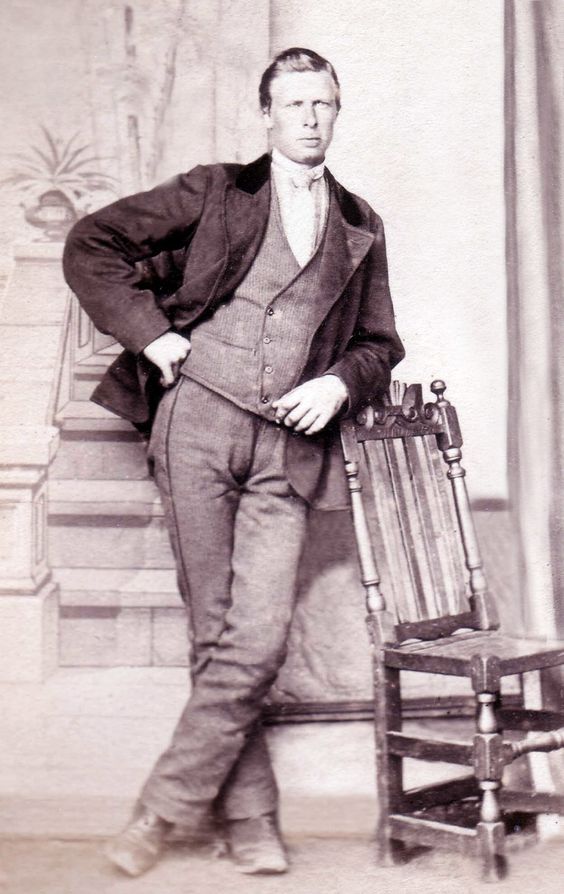
Gentlemen’s Fashion
As a rule, a gentleman in the 1860’s/70’s would wear high waisted flat front trousers. They might be a solid color, feature pinstripes or glorious plaids. A vest, with or without lapels, was generally worn and often accented with a pocket watch.
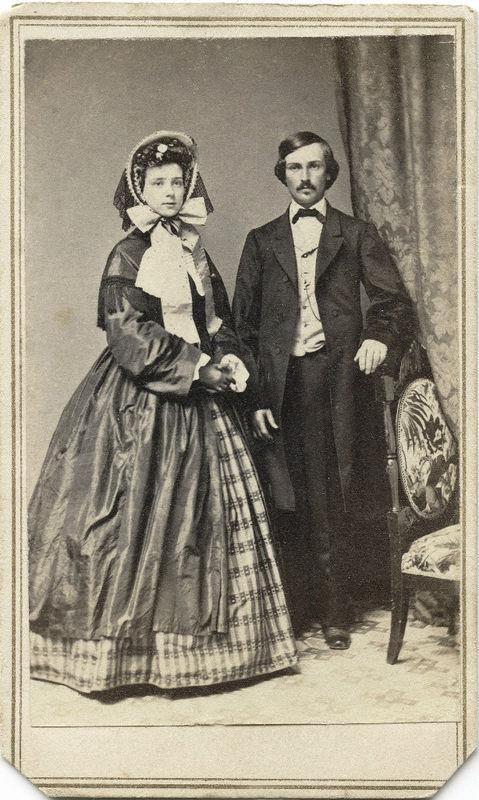
Shirts could feature band collars which did not require a tie or cravat.
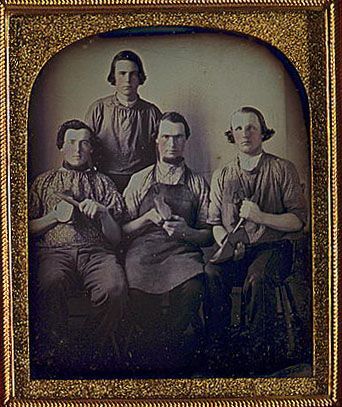
There were also a wide variety of collar styles to support the large range of neckwear.
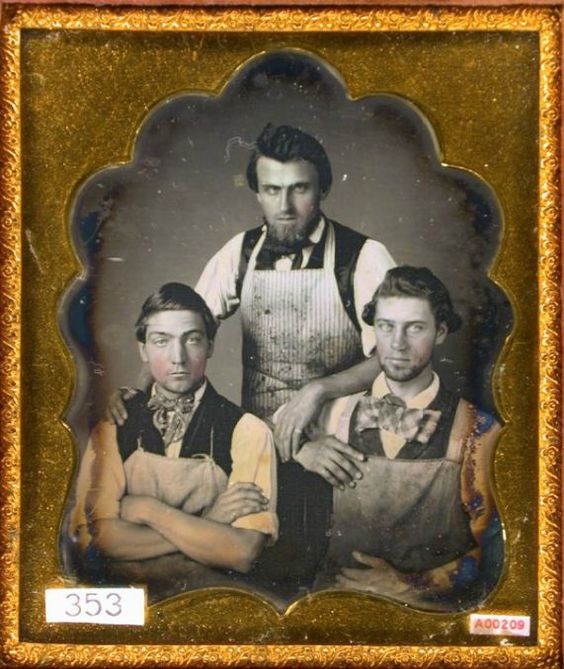
Mr. Décor settled on the high collar, cravat-wearing option.
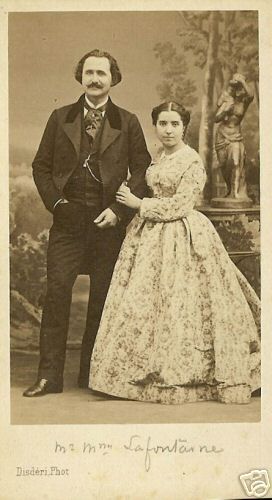
Pattern and Materials
To make his vest and cravat I selected the McCall’s M7300 pattern.
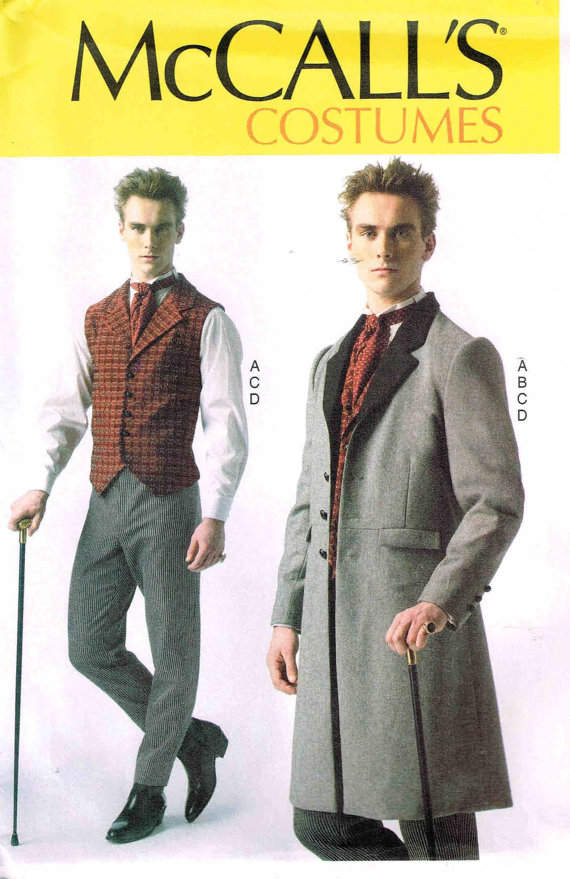
We then discussed options for the exterior fabric of the vest as well as the fabric for the lining of the vest and the cravat. It was Mr. Decor who suggested using the same Andover Little House on the Prairie fabric A-7951-B Prairie Flowers to match my dress.
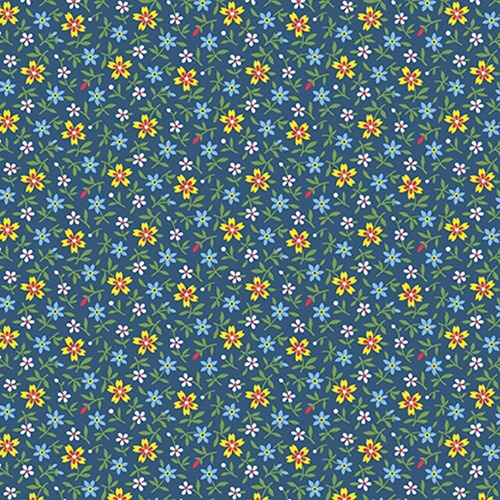
Calico Fabric
The flowery calico prints of today were not necessarily the calico prints worn by pioneers in the 19th century. Calico began as a plain woven fabric made of cotton. It originated in Calicut, South India in the 11th century. (The city is now known as Kerala.) The cloth was known as chaliyan. An early mention of the fabric came in the 12th century by writer Hemachandra who described a print with a lotus flower design. The fabric then made its way to Egypt by the 15th century.
By the 17th century calicoes from India were being imported by the East India Company. It became so popular that the British woolen industry became threatened. In 1700 an Act of Parliament was passed to prevent the importation of dyed or printed calicoes from India, China or Persia.
Early European calicoes were made from a cheap plain weave white cotton fabric, or a cream unbleached cotton. Designs could then be block-printed with a single dye such as red madder. Polychromatic prints (more than one color) were possible, by using two sets of blocks and additional dye colors.
From the book Dyeing and Calico Printing, by Dr. F. Crace-Calvert, 1878.
Real Men Wear Calico 1860’s/70’s Men Fashions
Printed calico was imported into the United States from Lancashire, England beginning in the 1780s. Today in the UK, Australia and New Zealand calico refers to a plain cotton fabric. While in America calico is known as a cotton fabric with a small, all-over floral print.
So did men wear calico? Indeed they did. The third photo down, shown at the top of this post, shows a man wearing a floral calico shirt. Below, this is also an actual calico shirt from the era.

For those early pioneers there was probably a limited range of fabrics to choose from.
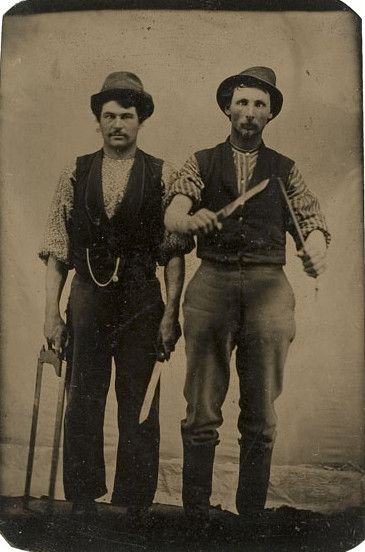
Just one bolt of fabric was probably purchased from a mercantile and the entire family was then outfitted in the same calico print.

I love this image of a Native American family. The caption on the back reads “portrait of Native American Apache Neschila (Woman Who Winks) and two children, a boy and a teenager, wearing a combination of Euro-American and traditional clothes including calico dresses and shirt, with moccasins”.

The stunning Gadji-Nonda-He, a Cayuga chief. He wears traditional regalia with what is presumably a trade calico shirt.

For this reason, among others, no one would have called this guy in his calico shirt a namby-pamby or sissy. Of course, that may also be because of his large Bowie knife.
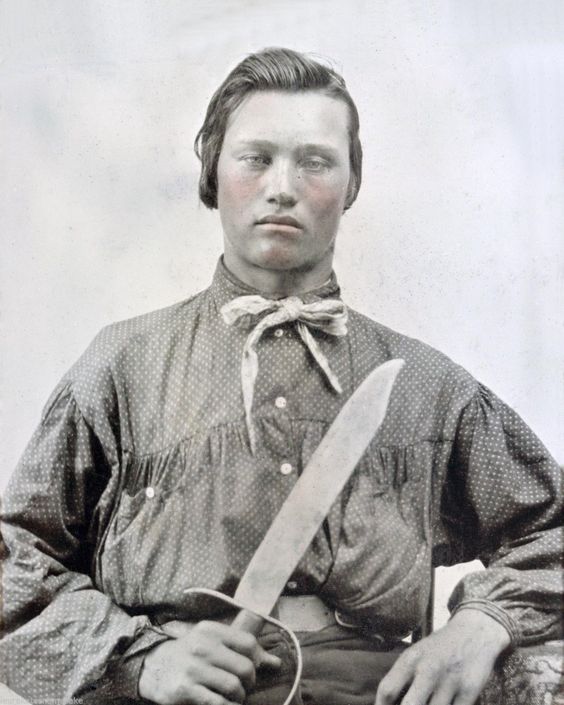
As for this pink calico shirt, both men and boys would have worn the color proudly. For centuries it was considered a masculine choice as it is a variant of red. It was not until the last mid-century that the shade came to be associated as being worn strictly by feminine genders.
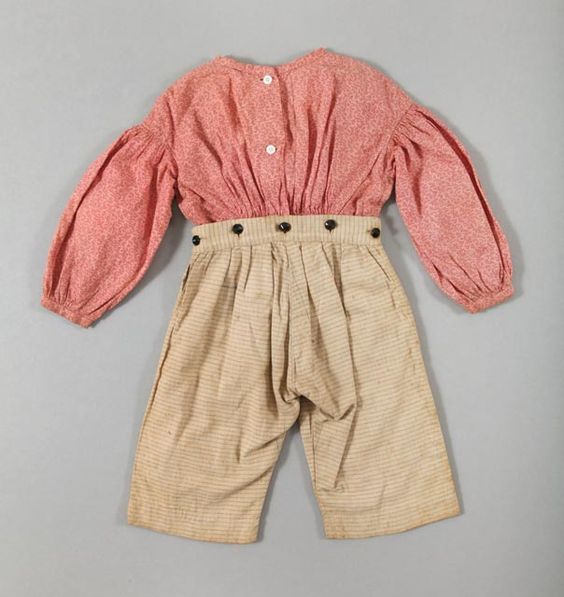
Pattern Woes
I would recommend the vest pattern for a mid to experienced seamstress. I personally am a visual learner who is also very literal. So when step #10 showed a seam that ended in a perfect point I assumed that this is what my vest should look like at this stage.
So when my seam looked like this I panicked.
This is why sewing makes me crazy half of the time!
It resulted in me ripping out the seam, matching my fabric pieces against the original pattern pieces thinking I had cut the fabric incorrectly. I hadn’t. #timewaster
Stay the course. In the end, the pieces will line up correctly when you join the interior lining with the exterior fabric.
I should perhaps mention that the exterior fabric was a vintage mid-weight red warp/navy weft cotton that I had found at a recent estate sale for $1.00.
Extra touches: I added a wee pocket to the front of the vest to hold the pocket watch. Personally, I would have preferred a hidden welt pocket but I didn’t think of this until the lining had already been attached to the exterior and I refused to rip out any more seams.
The patterned brass buttons are also appropriate for this era.
The cravat pattern is perfect for the new or inexperienced sewer. It went together quite easily in about 30 minutes.
Handsome Pioneer
Eric CHARLES Gunn transforms into Charles “PA” Ingalls quite handsomely. In a nod to his Panamanian heritage he opted to wear a true Panama hat.
Handwoven hat purchased in Panama many years ago. Heirloom pocket watch from his grandfather, Albert Wescott.
As it is still quite warm where we live the straw hat is an era-appropriate choice.
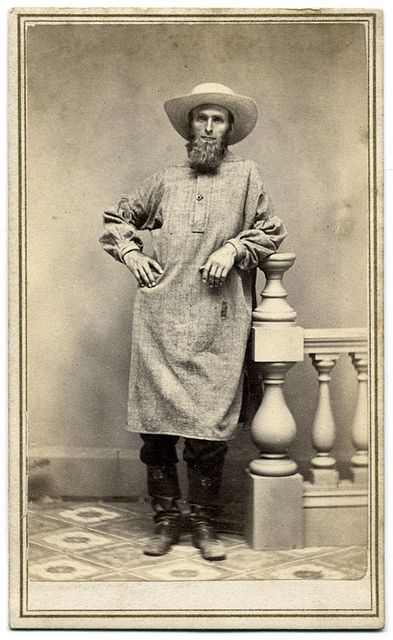
Straw hats of this era varied in their brim and crown sizing.

Truth be told my husband is a huge hambone. He adores honking cars and loves to interact with questioning people passing by. Particularly if they are out walking dachshunds.
He actually came up with several of his poses during the photo shoot. Here is his imitation of a shifty, albeit well dressed, cattle rustler.
By all means, leave a comment and tell him just how amazing he is. He will read and revel in every single one.
For those keeping financial score, the pattern was purchased at a 99 cent sale. Andover Fabric graciously provided the calico bringing the total for this costume to just $2.00.
Real men DO wear calico!
Laura

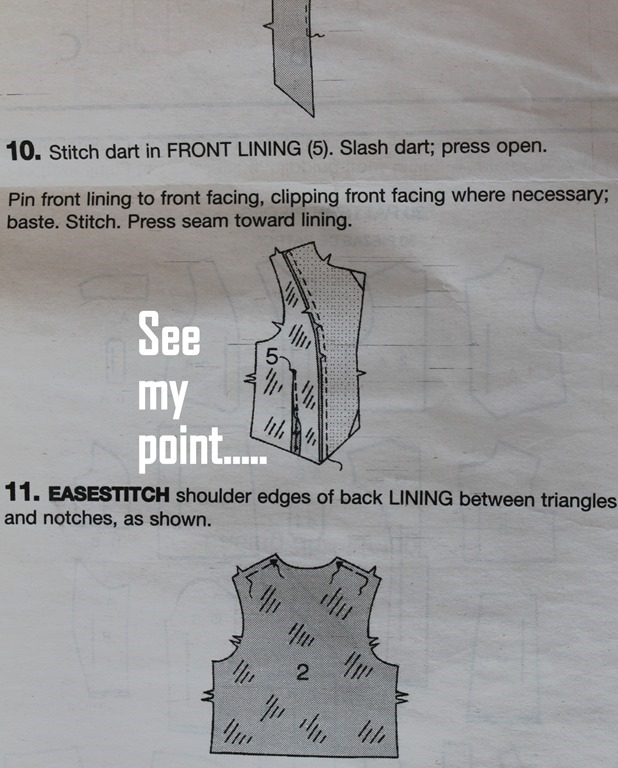
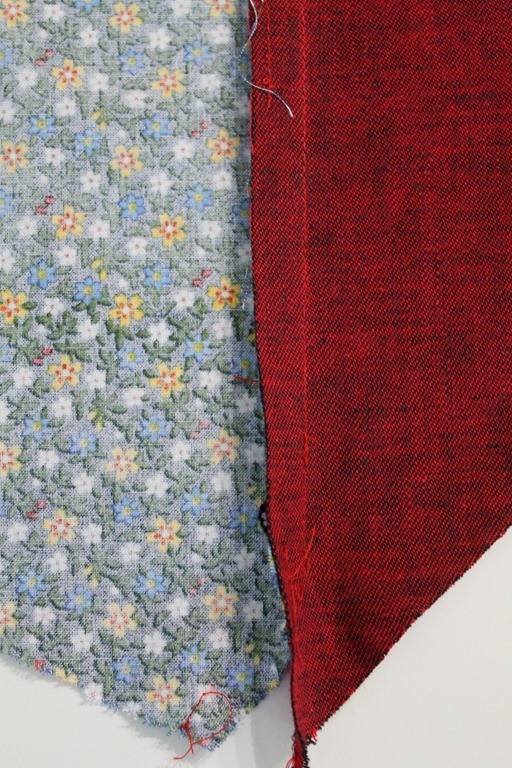

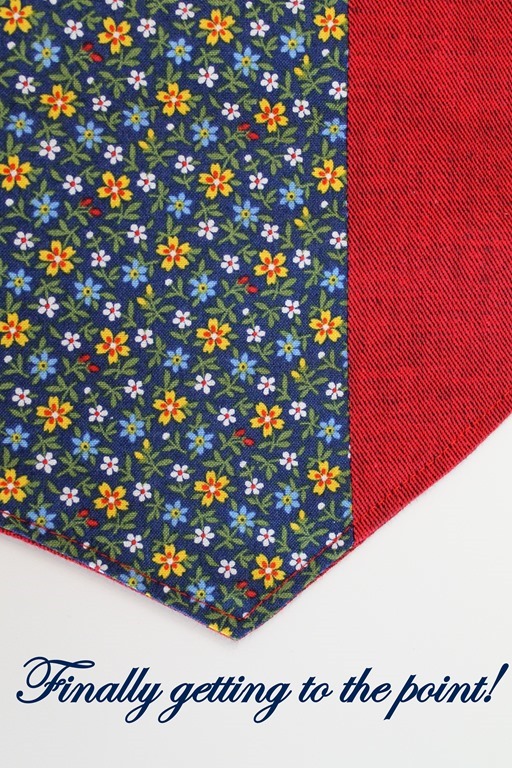
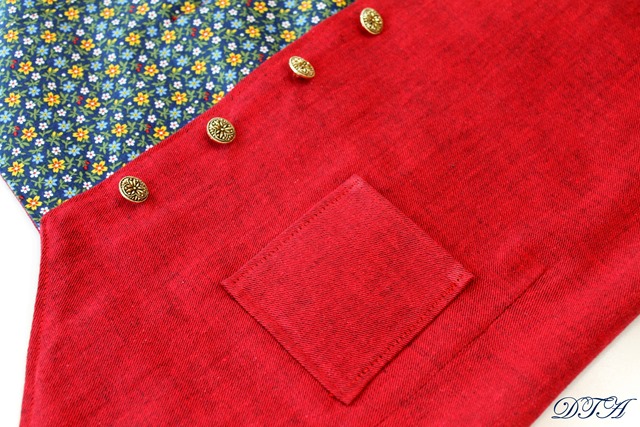


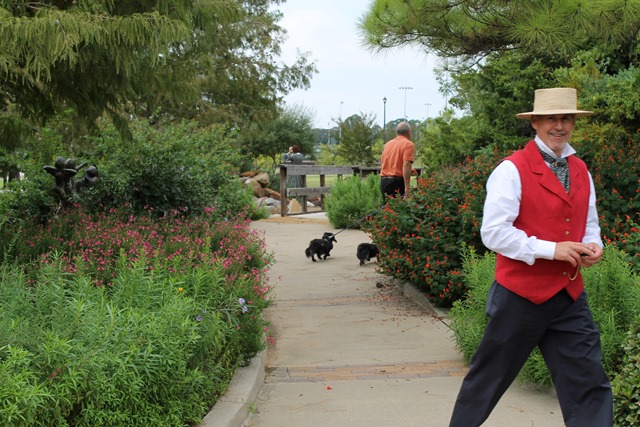
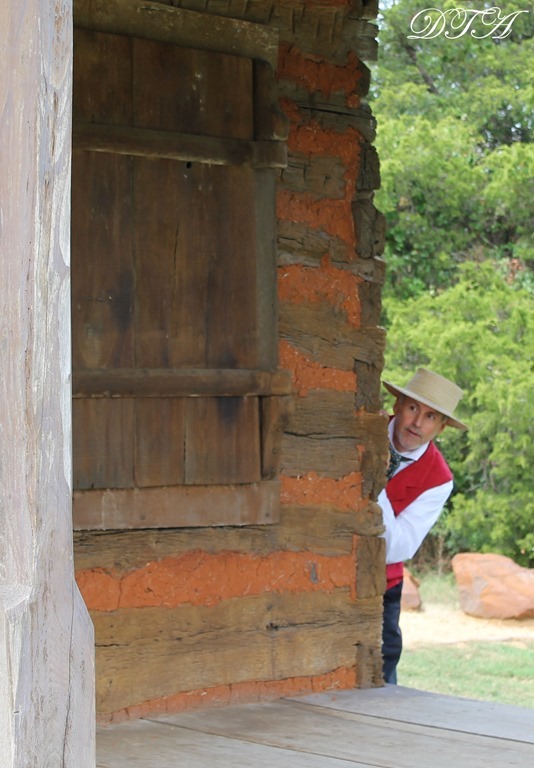
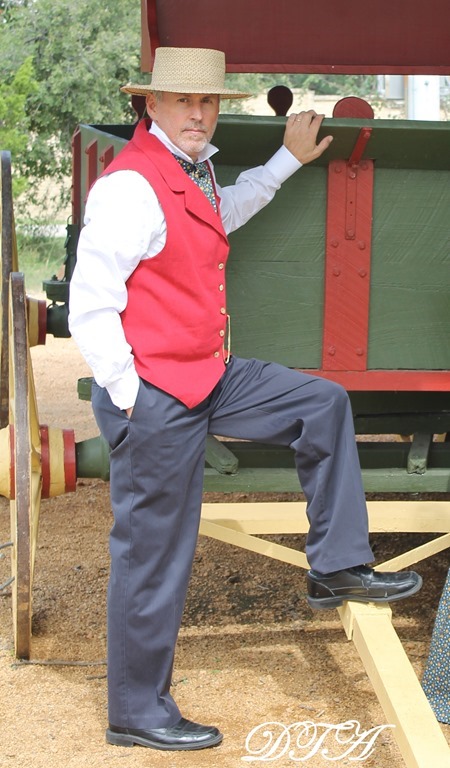
FABULOUS! It'/ all coming together spectacularly!
Great job, Laura Ingalls Gunn!
*hugs*
Kelley~
You two are a good pair.
Oh my word, I love it. He cracks me up. Such a trooper. You two are amazing.
I cannot tell you how much I adore Mr. Decor — cute as a bug and looks just fabulous in his ensemble. The two of you together will be four-star and I can't wait to see the end result.
I so admire your stitching. My version of hemming has much to do with double stick tape and when I once made a little simple shift the hem looked like the rocky mountain skyline! Your work is terrific and your dedication to getting it just right is what makes it so.
Loving the vintage photos, your research and this whole series of posts!
He looks great! My husband and I attended Dickens on the Strand in Galveston several years ago, and if you dressed Victorian style you got in free. So I convinced my husband he had to dress up too. He wore trousers, an argyle sleeveless sweater vest, long sleeved dress shirt and a wool cap. And he didn't mind a bit! And he looked pretty darn cute too!
I'm so enjoying the costume series you're doing. I love historic clothing, especially the latter 1800's. I guess I missed out on why you're creating these, but it must be a special event. I'll keep going back in the archives to find out more.
Mr. Adore is quite thedashing handsome fellow, is he not?
I guess I should share that for years my husband and I have been making and wearing late 1400s Italian Renaissance garb. My husband teaches that era fencing, and he makes all his own clothes and is quite dashing (and a hambone) like Mr. Adore, as well. So I get it! Gotta love a well-dressed gent!
: – )
Very handsome outfit!! Your husband looks nice in red. Amazing costumes!!
ha, what fun!
Laura, Such an interesting post. You are amazing! Your design skills and sewing talent is over the top.
I can't tell you how much I have enjoyed your “Becoming Laura” posts. I've looked forward to each step of the process. Such a great story and such wonderful sewing skills. You and your handsome hubby look perfectly at ease at the Dance. Thx. for the fun.